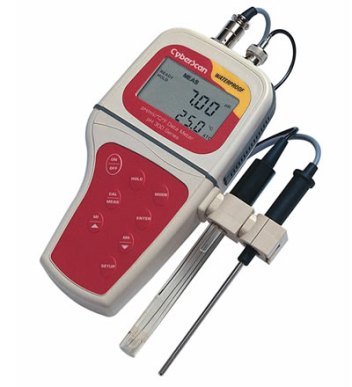Top seven questions about pH meterspH meters are a widely used electronic instrument for testing the pH (acidity or alkalinity) of liquids. In some cases they are also used for measuring the pH of semi-solids such as food and moistened soils. Below are some commonly asked questions about pH meters.  1. Why do I need to calibrate my pH meter?As pH electrodes age, their measuring characteristics can shift. Calibration is used to allow the meter to make corrections for these changes and keep the readings accurate. 2. How often do I need to calibrate my pH meter?How frequently you need to calibrate your meter depends on how accurate you need the measurements to be and how frequently you are using the meter. If you use your meter every day you should calibrate it daily, if you use it a few times a week, weekly calibration would be suitable. It is best practice to calibrate you meter before each use as this will ultimately give you the most accurate reading possible. 3. How should I store my pH electrode?pH electrodes have a glass bulb that needs to be kept hydrated. To ensure longer life and more stable measurements, pH electrodes should be stored in electrode storage solution. This helps to keep the bulb hydrated and minimise leakage from the internal electrolyte solution. If you do not have any storage solution, pH 4 or 7 buffer can be used. Distilled or deionised water should never be used for electrode storage. 4. What items do I need to calibrate my pH meter?To calibrate your pH meter you will need your pH meter, at least one buffer solution, a clean dry beaker or cup and water for rinsing before and after calibration. 5. How can I clean my pH electrode?For most water testing applications, simply rinsing with distilled water will suffice. A mild detergent and tap water solution can also be used. There are also electrode cleaning solutions available. 6. How can I measure soil pH?Prepare a sample by combining a 10g soil sample with 10ml of distilled water in a clean dry jar, beaker or sample container (a 1:1 solution). Mix these thoroughly and allow the mixture to settle for 10 minutes. Carefully insert the probe so that bulb is in the soil part and the junction is in the supernatant (the water above the settled soil). Then allow the reading to stabilise. Alternatively you can use a product like the pHspear to allow you to make pH measurements in-situ. 7. What is temperature compensation?The pH value of a solution is temperature dependent. As a result, pH readings should be compensated for temperature to standardise the readings. pH meters will have either no temperature compensation, manual (MTC) or automatic temperature compensation (ATC). The meters with MTC need you to enter a temperature reading in manually and the ATC meters will take a temperature reading and adjust the pH reading automatically Free Shipping to Anywhere in Australia – Expert Advice – Call 1300 737 871 Supplied in Australia by Instrument Choice
Call our scientists on 1300 737 871
www.insrumentchoice.com.au |
| 
